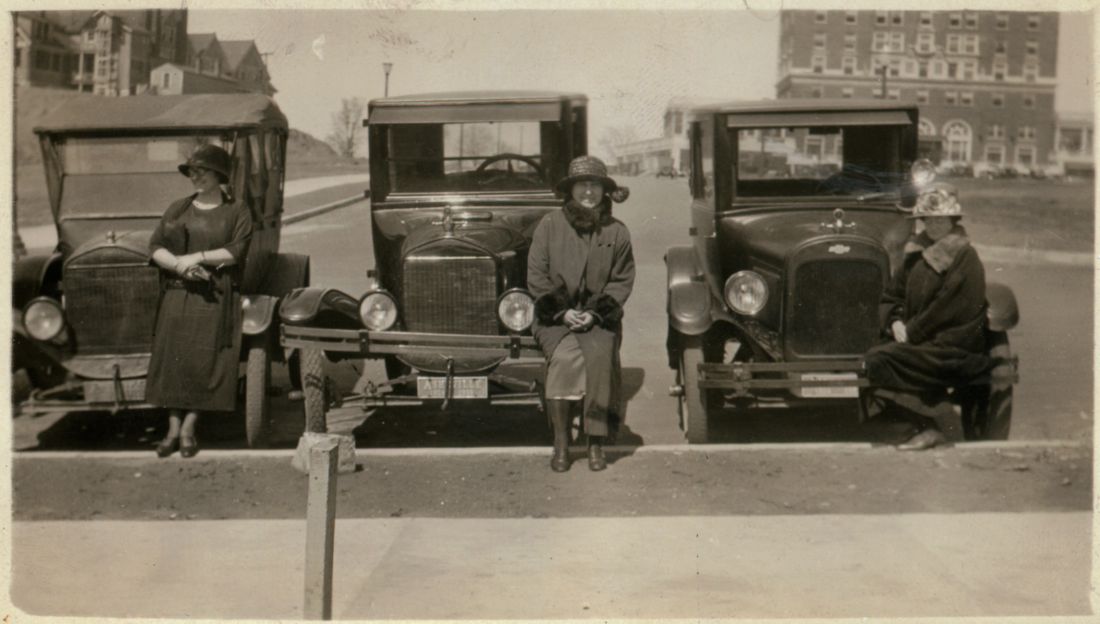The news was bright on March 23, 1925. “Electric traffic signals recently purchased by the city will be in operation May 1,” The Asheville Citizen declared. In total, four signs were set for installation at the intersection of Market and College streets.
The announcement was the latest in a series of articles featured in the local paper about traffic woes and needs. Of course, the issue wasn’t unique to Asheville.
“Hundreds of American cities are earnestly considering how they may best deal with the traffic problem created by hordes of automobiles,” one editorial read in the Feb. 21, 1925, edition of The Asheville Citizen. “It is a perplexing matter and in many places a gravely serious one.”
Throughout the country, the article continued, ideas for addressing the issue were being discussed. “There are schemes for wider and arcaded streets; for new streets; for more traffic police; for one-way roads and detours; for subway streets and two-story streets; for more regulations and new regulations. But these remedies give but brief relief because the traffic rapidly increases.”
For Asheville, the editorial declared, the solution came down to the voluntary actions of everyday citizens to forgo their vehicles when they could, opting to travel by foot or streetcar instead. Furthermore, the piece asserted, delivery companies should reroute all trucks to less crowded streets to help reduce city street congestion.
Enthusiasm for the topic of traffic continued into the spring. On April 20, another editorial featured in The Asheville Citizen informed readers of a development in the nation’s capital. “Long live the pedestrian!” the piece began. “Down with the chauffeur!”
According to the article, a new rule was being considered in Washington, D.C., empowering pedestrians to control the flow of traffic with the snap of the wrist. A raised right hand, the paper explained, would alert drivers that the individual intended to cross the street, requiring motorists to stop.
The editorial marveled at the possibility, asserting:
“The pedestrian, no longer compelled to emulate a frantic grasshopper, will never lose his head or his limbs in a traffic jam. On the contrary, surveying the roadways of a nation’s capital, he will twirl a supercilious mustache and lift an inquiring eyebrow when, at his royal gesture, engines are choked and quivering fenders come to a stop within an inch of his contemptuous coattails. And, if the upraised right hand works satisfactorily in Washington, it will be tried throughout the country. Picture that amazing situation! From the Atlantic to the Pacific, from the Lakes to the Gulf, the pedestrian the newly crowned king of traffic!”
There is no clear evidence the raised-right-hand rule ever made its way to Asheville. Instead, the city had its new traffic signs (equipped with lights and bells) to consider.
“Asheville’s automatic traffic signals went into operation yesterday and blue-coated minions of the law reported no causalities and comparatively little bloodshed,” The Asheville Citizen wrote on June 11, 1925. “The city echoed with the insistent clamor of bells, which apparently, were of little more use than alarm clocks in the dormitory of the Seven Sleepers.”
Despite the excessive noise, the signals brought “a more urban air [and] seemed to flaunt the fact that Asheville is indeed a city,” the article stated. Meanwhile, the lights themselves triggered “memories of other and more social days [prior to prohibition], the amber of pure rye whiskey, green of fresh mint and red, ah the luscious cherry which makes of the julep a jewel.”
Editor’s note: Peculiarities of spelling and punctuation are preserved from the original documents.




Before you comment
The comments section is here to provide a platform for civil dialogue on the issues we face together as a local community. Xpress is committed to offering this platform for all voices, but when the tone of the discussion gets nasty or strays off topic, we believe many people choose not to participate. Xpress editors are determined to moderate comments to ensure a constructive interchange is maintained. All comments judged not to be in keeping with the spirit of civil discourse will be removed and repeat violators will be banned. See here for our terms of service. Thank you for being part of this effort to promote respectful discussion.